If you’ve ever spent a windy night in a tent, you know the struggle is real. When you’re hopping out at 2am to re-pound stakes, propping up poles from inside, and lying awake listening to that infernal flapping noise, the wind can make for a really long night.
My thru hikes and bikepacking trips have challenged me with windy nights on many occasions, most recently during a bikepacking trip in the Anza Borrego Desert. A cold, gusty wind howled for two nights in a row and all three of us, in separate solo tents, struggled to keep our shelters upright during the worst of it. In working through this I re-learned some old tent pitching tips I hadn’t thought about recently.
Of course the details depend on the type of shelter you’re using. A solid freestanding tent will fare better than a fussy trekking-pole-supported tarp, at least in my experience, but the same basic principles apply.
The following tent pitching tips are for smaller and lighter shelters usually carried by backpackers, bikepackers, and other self-powered types. If you’re trying to pitch one of those 8-person car camping palaces in a howling gale, I’m sorry and good luck!
Now, on to what you need to know about pitching your tent successfully and securely in the wind.
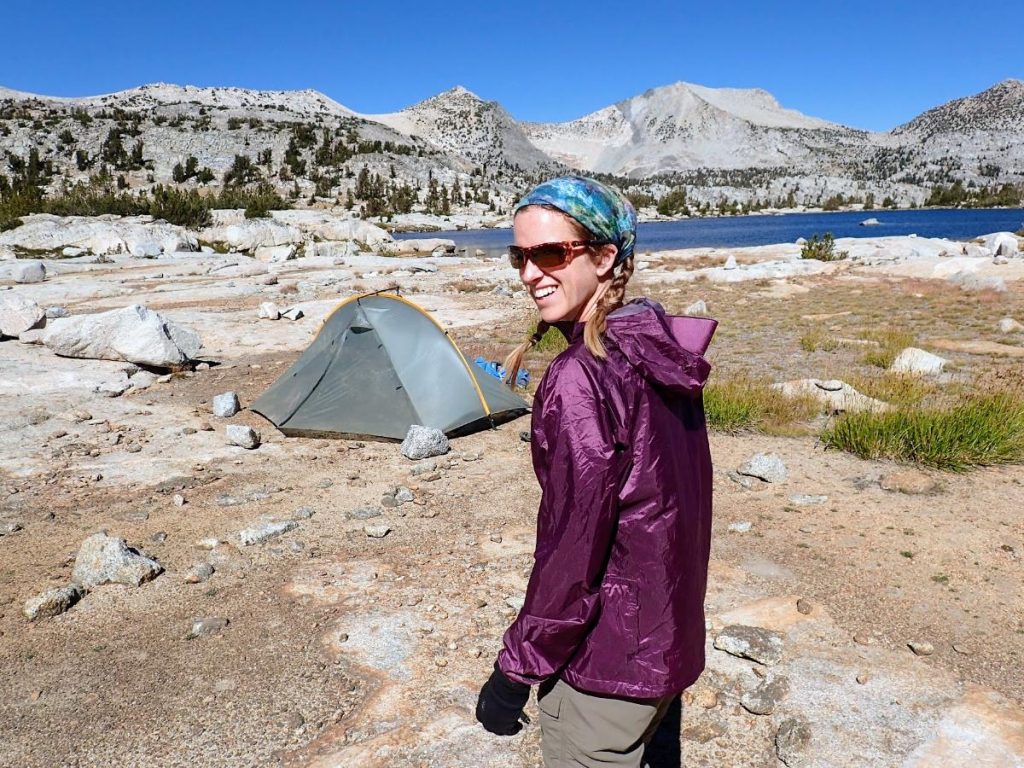
The author and her tent in a very windy granite basin on the John Muir Trail, over a decade ago.
Choose a sheltered spot, if possible. When the wind is really ripping, any amount of shelter helps. It’s worth taking time to find a spot downwind of a boulder, bush, or rise in the landscape. Avoid exposed ridgetops, and valleys that funnel the wind.
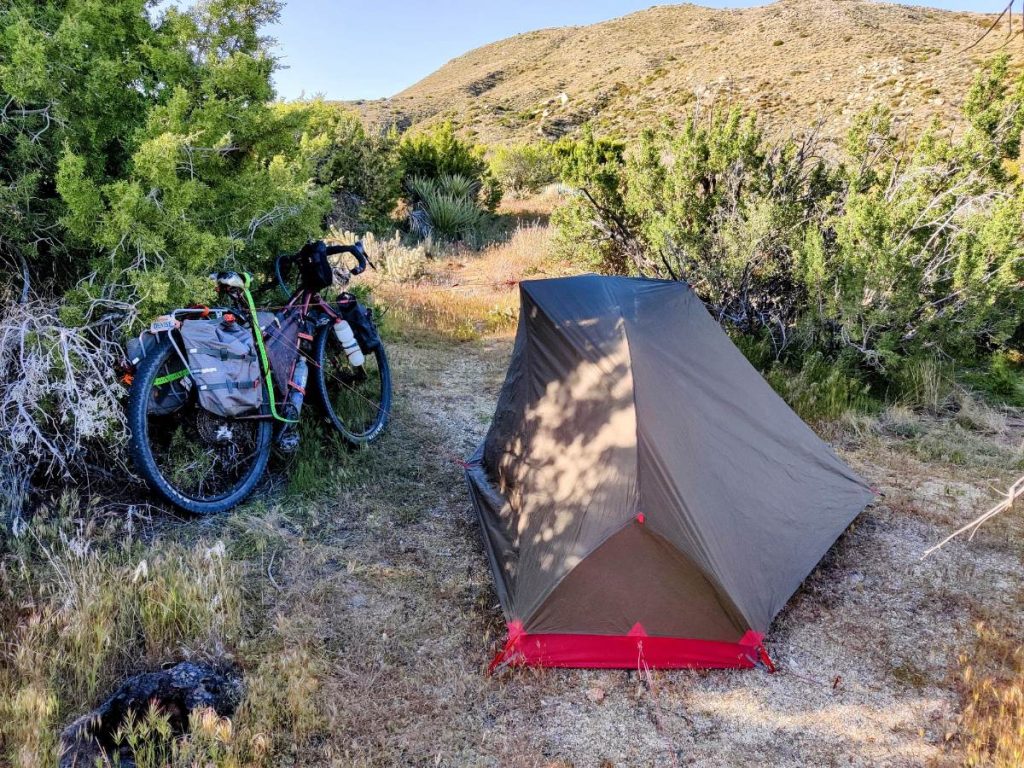
This campsite was very strategically placed downwind of a large juniper bush for shelter from the wind.
Orient your tent so the smallest side is facing into the wind. This may be the single most important tip of them all. How to tell which way the wind is blowing? Rotate your head and body until you hear the noise of the wind evenly in both ears. Of course sometimes the wind direction changes… just do the best you can. The goal is to avoid having the wind hit the long side of your tent straight-on.
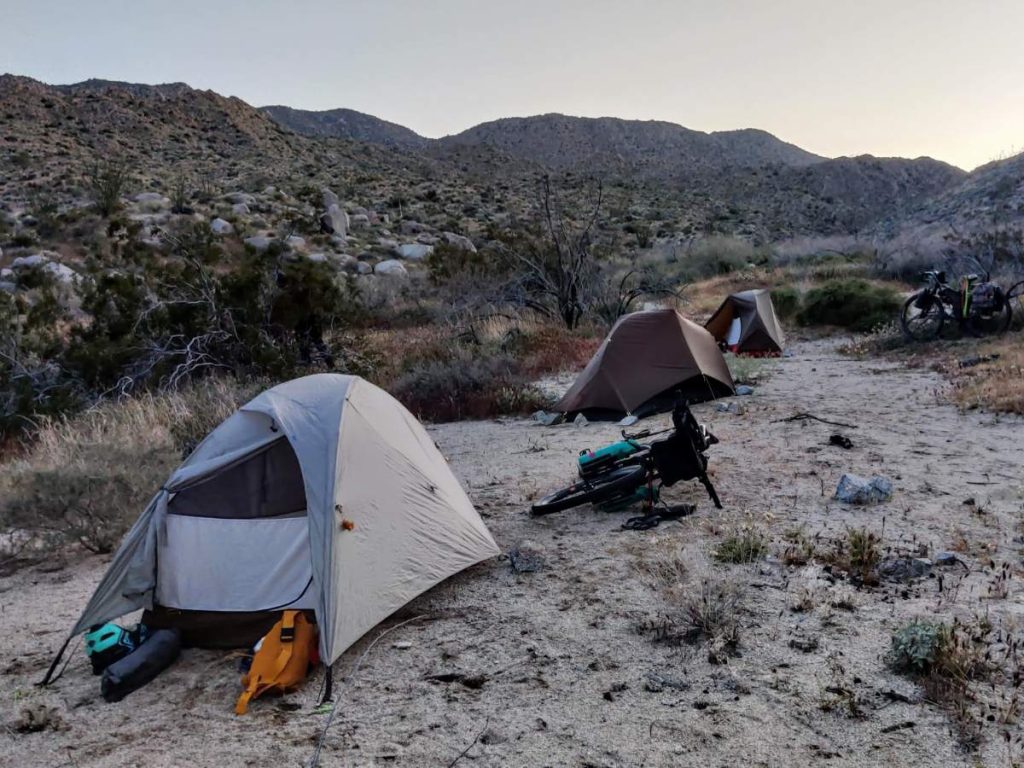
At this campsite the wind was coming from over those hills at the back right, so we all oriented our tents with the smallest end facing that way.
Tether everything as you work. I recently watched a friend’s tent (actually my tent, which she was borrowing!) nearly blow away across the desert while she tried to pitch it. Thankfully she has a lot of experience with gnarly weather, and she had looped one of the guy lines around her leg before she started working. Nice save! When pitching a tent in the wind, always secure each part with a heavy object or a guy line throughout the process.
Stake down the components as soon as possible. On still days I often pitch the inner and attach the fly before choosing my final position and pounding in stakes. But when the wind is howling I’ll stake down all corners of the inner before I add the poles, and before I even think about adding the fly.
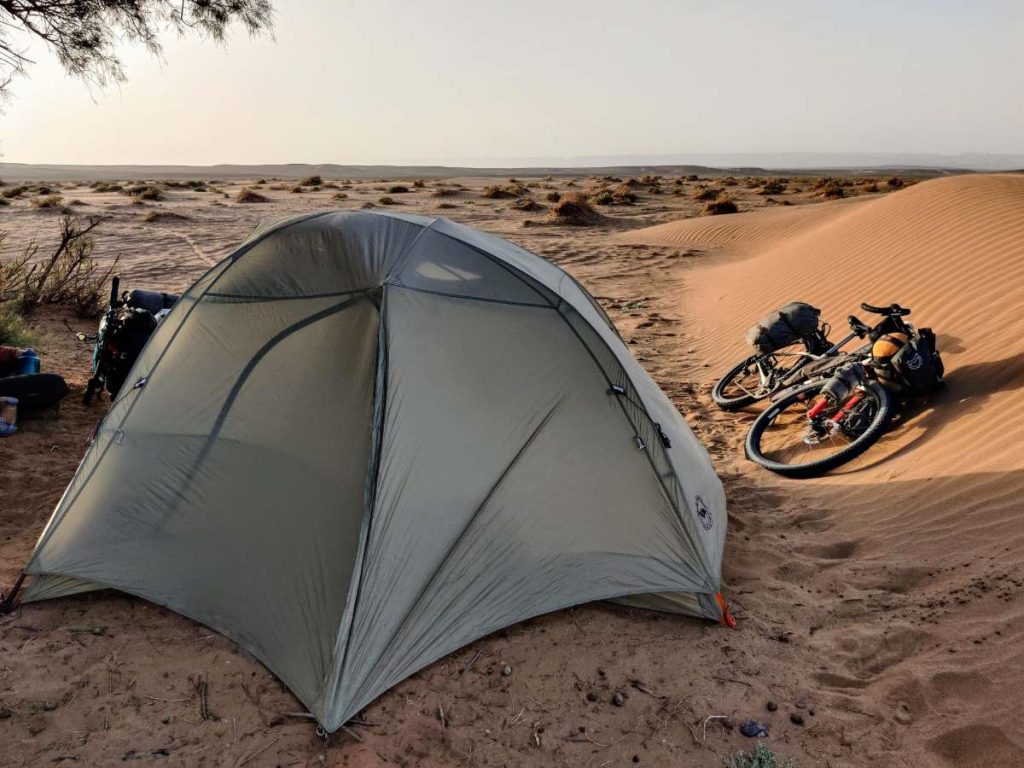
Larger tents are harder to orient correctly because they don’t have a smaller end. Nevertheless my Copper Spur HV UL3 performed admirably at this windy campsite in the Sahara.
Angle the stakes at 90 degrees to the direction of pull. Usually this means pounding them in at roughly a 45 degree angle to the ground, with the tip pointing toward the tent and the top pointing away from it. This gives them the best chance of staying in the ground despite a strong pull.
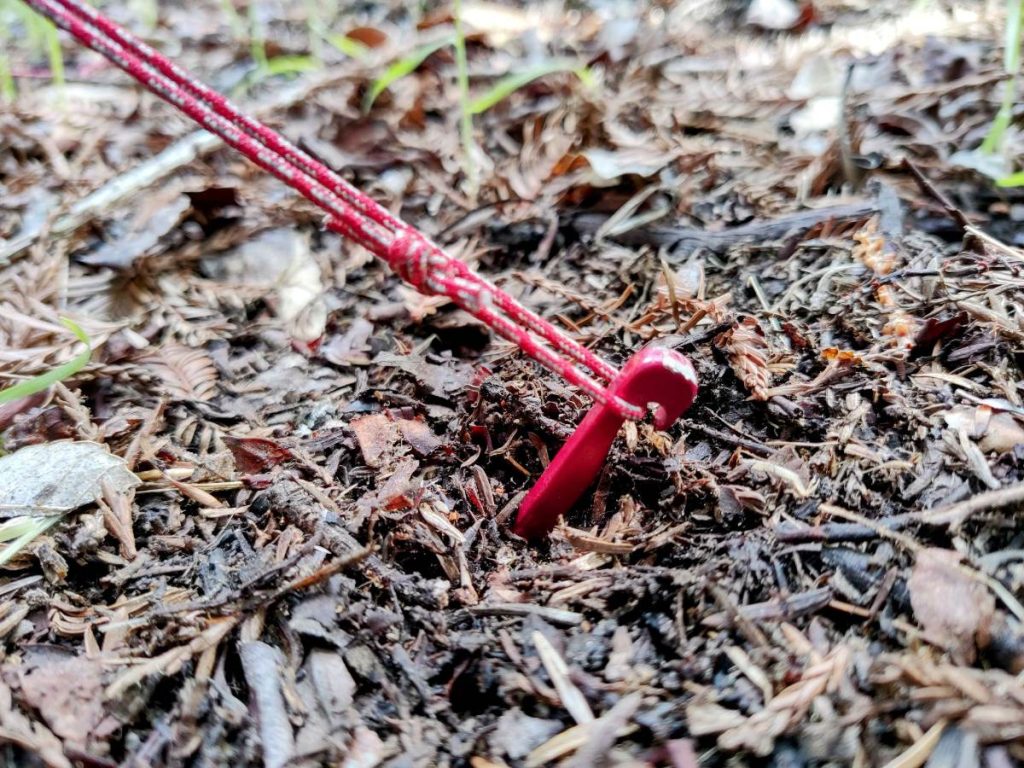
Pound stakes into the ground at roughly a right angle to the direction of pull for the strongest hold.
Pound the stakes in thoroughly. Use a rock if needed, but be gentle because stakes can break (we broke one doing exactly this on the recent trip in Anza Borrego).
Place heavy rocks atop or in front of vulnerable stakes. A heavy rock atop a properly angled stake, or directly in front of it, makes it much harder to pull out of the ground. Usually the door / vestibule stakes are the most likely to pull out, especially in soft soil.
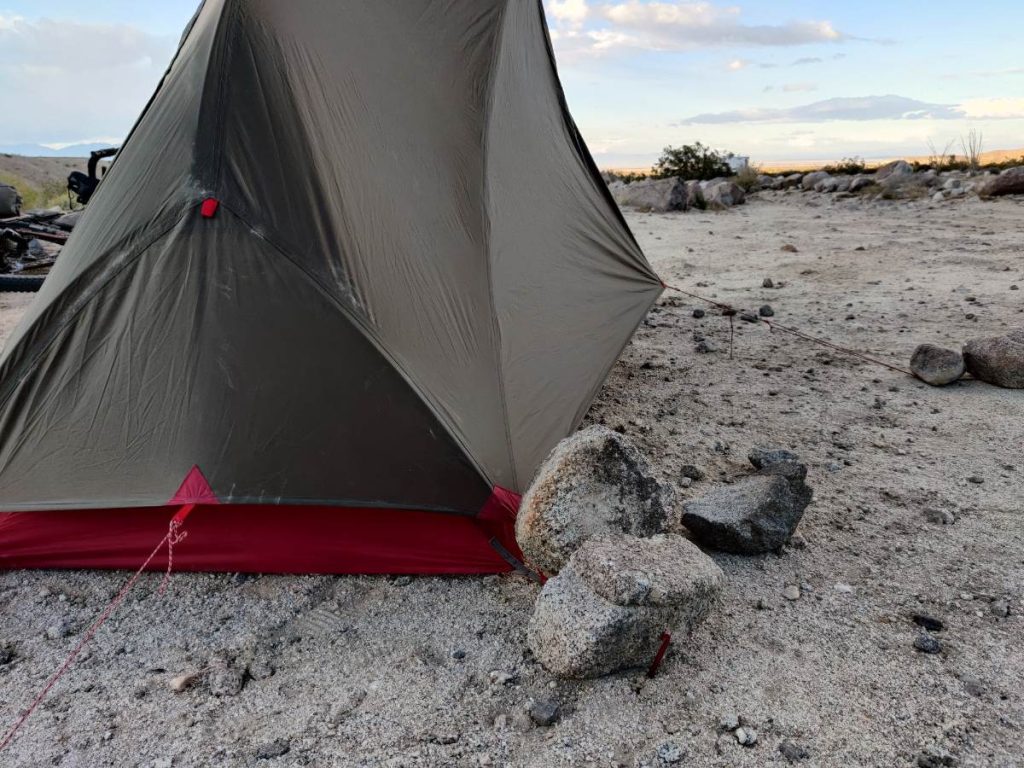
Heavy rocks are perfect for stabilizing stakes that otherwise want to pull out.
Aim for a very taut pitch. This will give your tent better aerodynamics in the wind, and also cut down on that surprisingly noisy flapping sound. If your tent design allows, tighten up the lines midway through the night to remove slack.
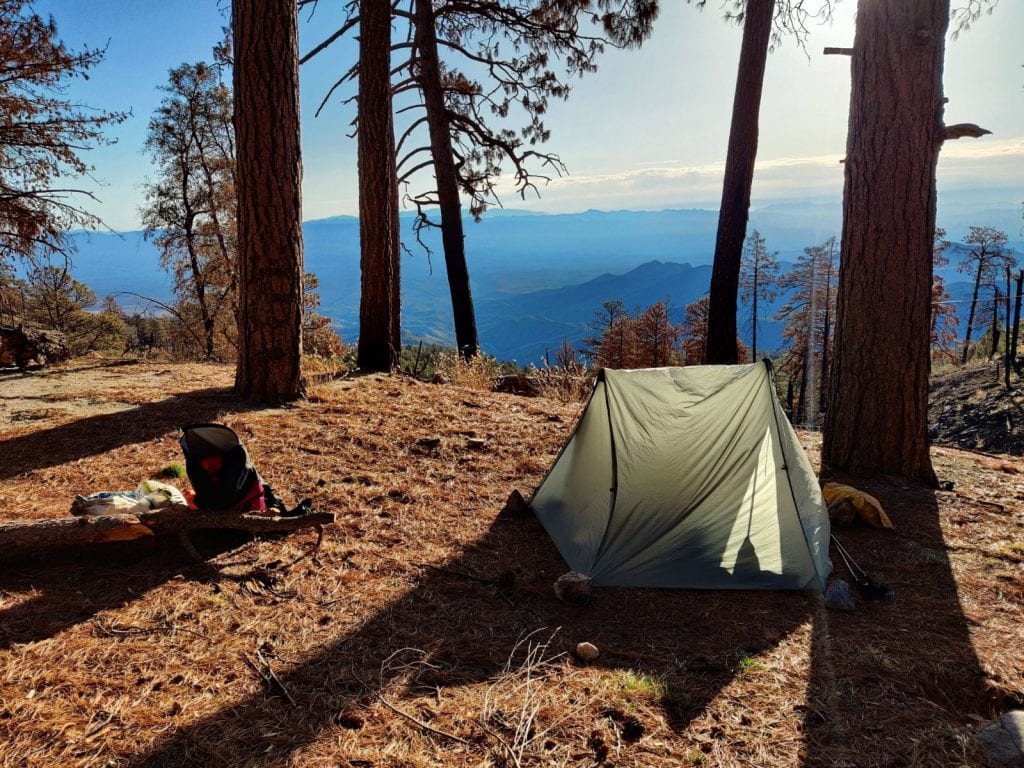
This tarp is looking pretty saggy after a windy night on the Arizona Trail. It helps to tighten up the pitch and remove slack throughout the night.
Use extra guy lines. Many shelters have a standard set of stakes and lines, plus a few extra loops for occasional use. In the wind, use them all! If you don’t have enough stakes, tie the lines off to objects like a tree, rock, or your bike.
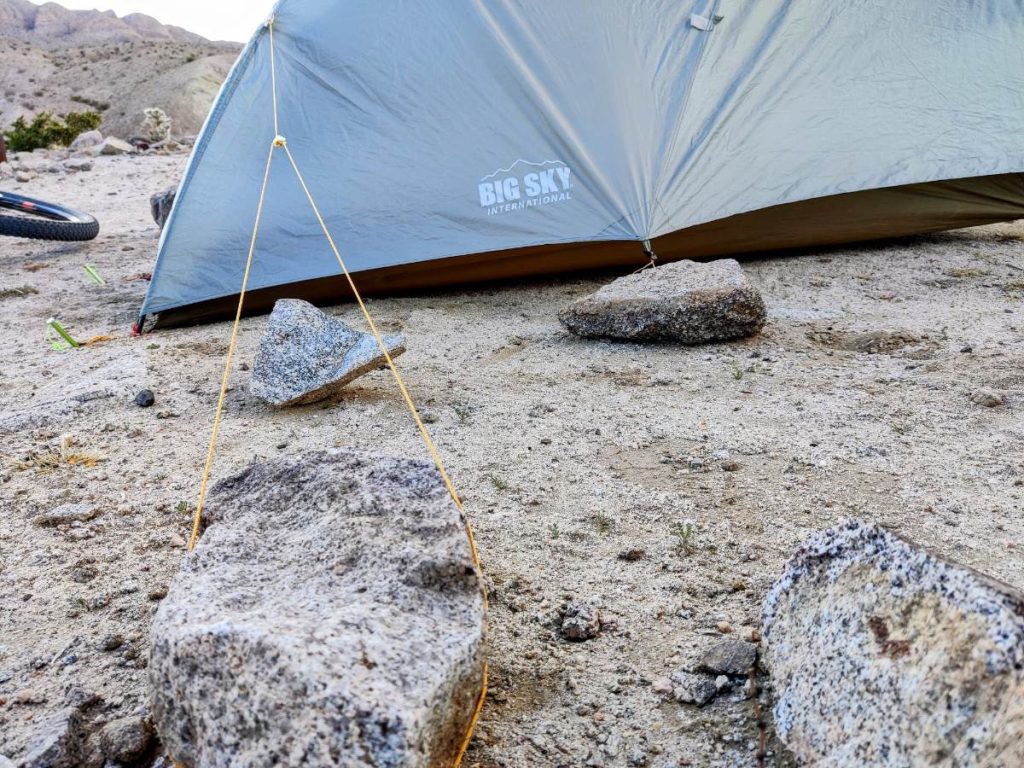
Using a mid-pole guy line, one that I usually ignore, for extra stability in the wind.
Use those extra loops on the inside of the fly. It’s common for double-wall tents to have velcro loops on the inside of the fly which attach to the poles. Since the fly is the part of the tent staked out most securely, this attachment transfers those forces to the poles and stabilizes the entire structure. Without it your tent poles may start leaning and collapsing inward as the poles slip against the fly.
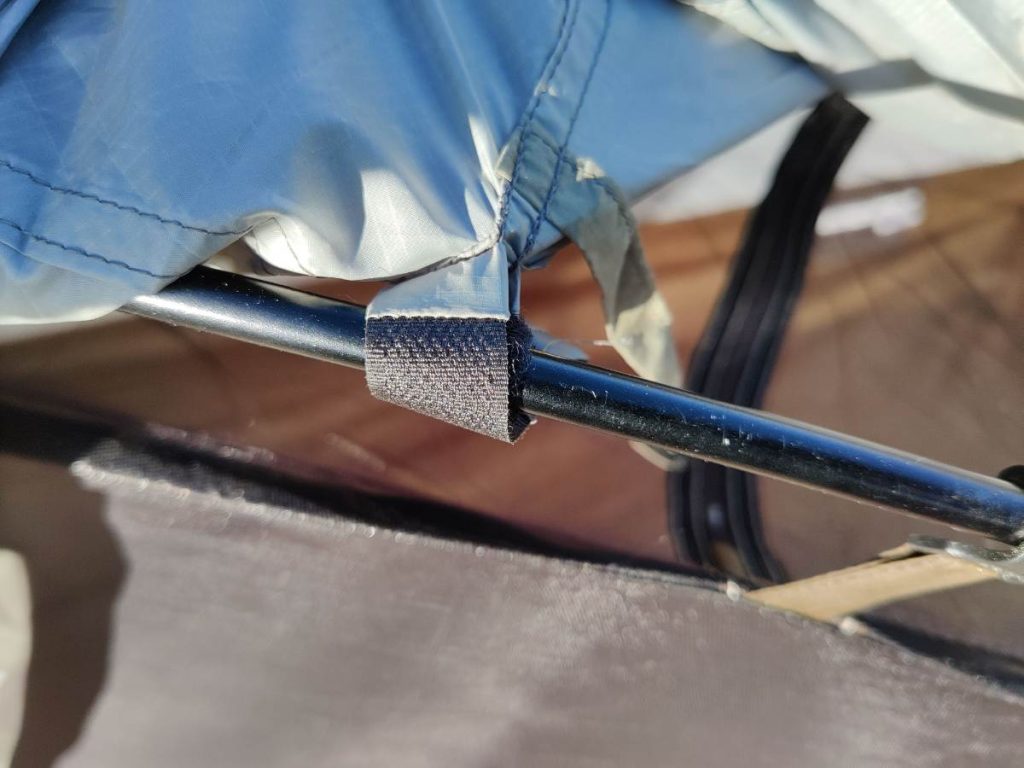
On my Big Sky Soul, these loops on the inside of the fly help stabilize the poles in wind.
Keep the fly zipped once the tent is pitched. Otherwise you might accidentally create a sail perfect for catching the full power of the next gust.
Final suggestion: ear plugs. Once you’ve done all you can do and you’re fairly sure your tent will survive the night, sometimes it’s best to pop in your ear plugs to mute the maelstrom and try to get some sleep.
More Outdoor Resources
If you liked this post, you might also like these:
Or visit the bikepacking and backpacking sections for lots more!
About the Author
Hi there, I’m Alissa, founder of Exploring Wild. I’ve traveled over 19,000 miles by bike and still can’t stop planning my next ride (and helping you plan yours). Pavement and panniers or singletrack and seat bag, I love it all. On my bike I feel free. Learn more about me here.
Shop Bikepacking Resources
Bike resources in your inbox?
There’s more where this came from! Sign up here for occasional emails full of inspiration and information about bikepacking and bicycle touring.
Share the Adventure
If you found this article helpful, please consider sharing so more people can benefit from it:
The post Pitching a Tent in the Wind: Sanity-Saving Tips for Backpackers and Bikepackers appeared first on Exploring Wild.
https://exploringwild.com/pitching-tent-in-wind/?utm_source=rss&utm_medium=rss&utm_campaign=pitching-tent-in-wind
 CampingSurvivalistHuntingFishingExploringHikingPrivacy PolicyTerms And Conditions
CampingSurvivalistHuntingFishingExploringHikingPrivacy PolicyTerms And Conditions
